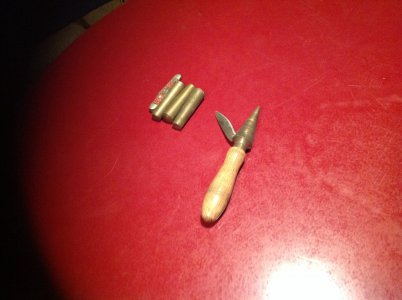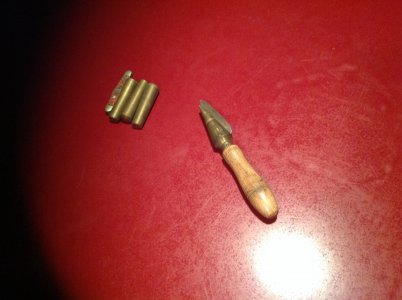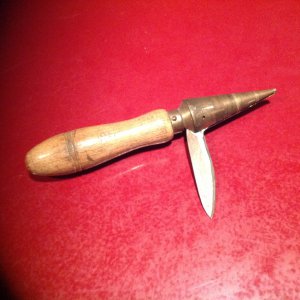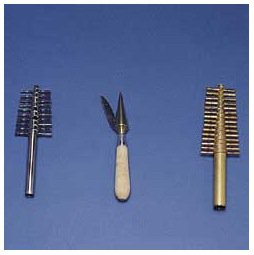- Joined
- Nov 8, 2011
- Messages
- 1,678
Place the 3 contact areas on a metal pipe or electrical conduit and it shows what size it is. Looks like it also shows what size tap drill for the pipe sizes.
I haven't seen a 6" pipe tap in a long time.
View attachment 66529



Anybody know what this tool was designed for? I bought a box of goodies at a sale that had some pieces of brass in it. I recognized the tapered plugs and bushings, knowing they were used to plug leaking tubes in large refrigeration machines. Also in the box was this knife looking thing with a lose fitting blade and a brass tapered assembly. Thought at first glance, it must be some kind of deburring tool. Other than that, I just don't know. Would like to know for sure.
Thanks,
Jim Dunn


Very interesting history lesson on the cork borer, might be almost useless information but I still like to see old tools and know their uses.
